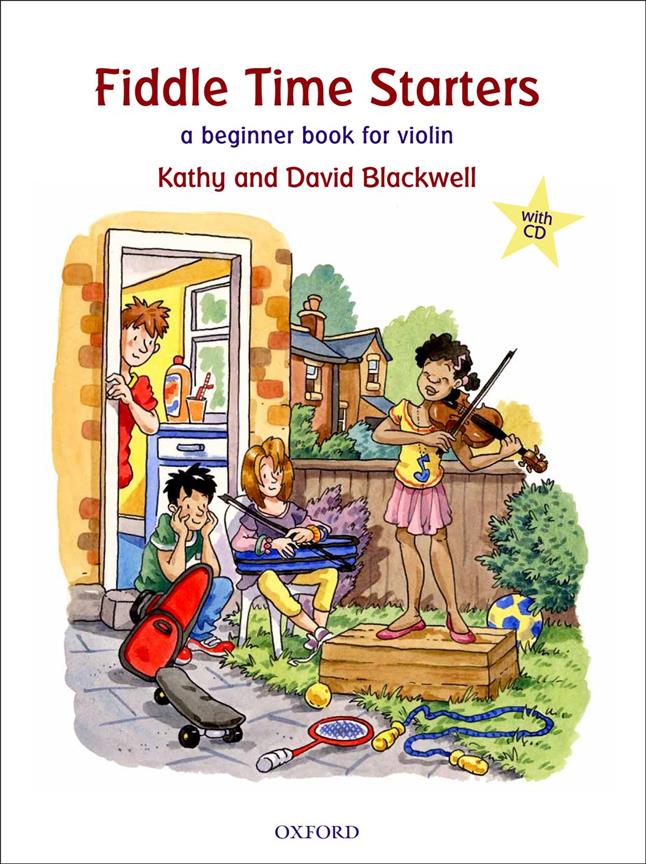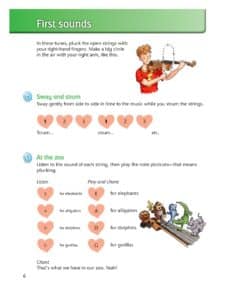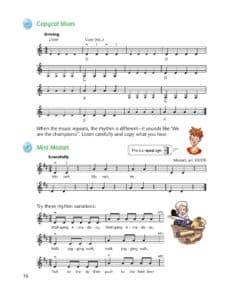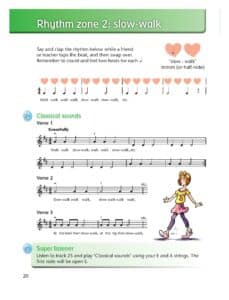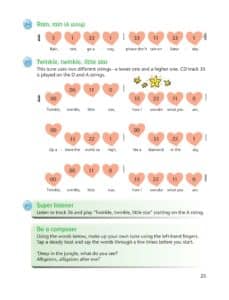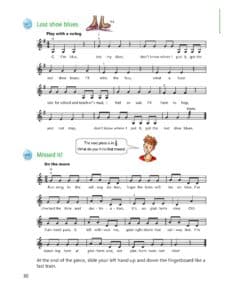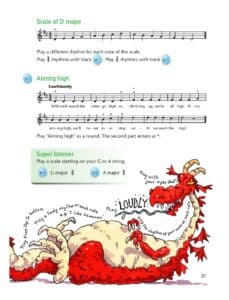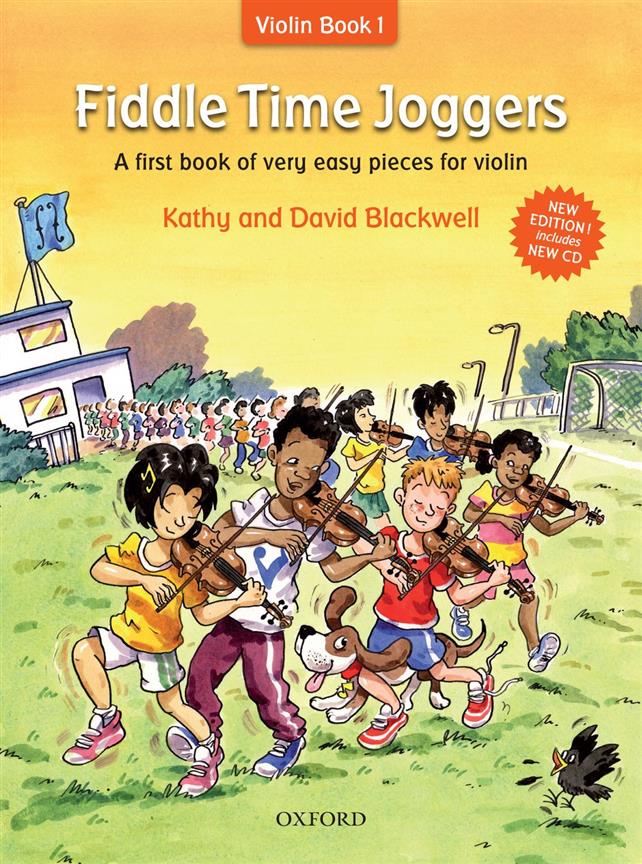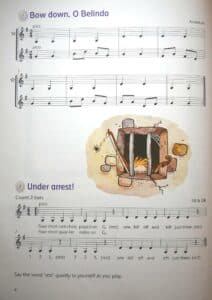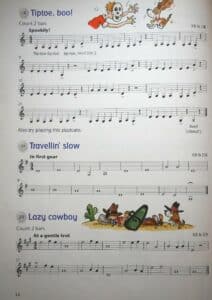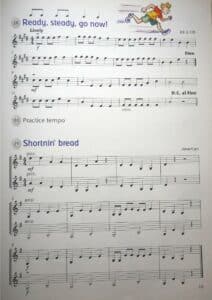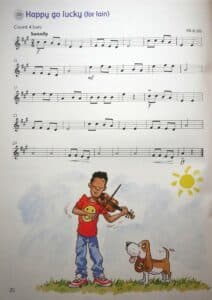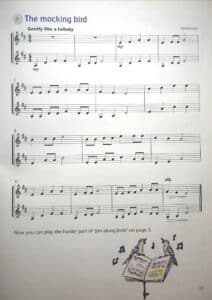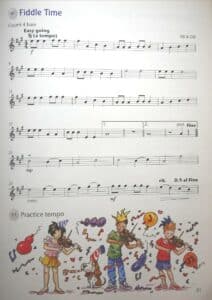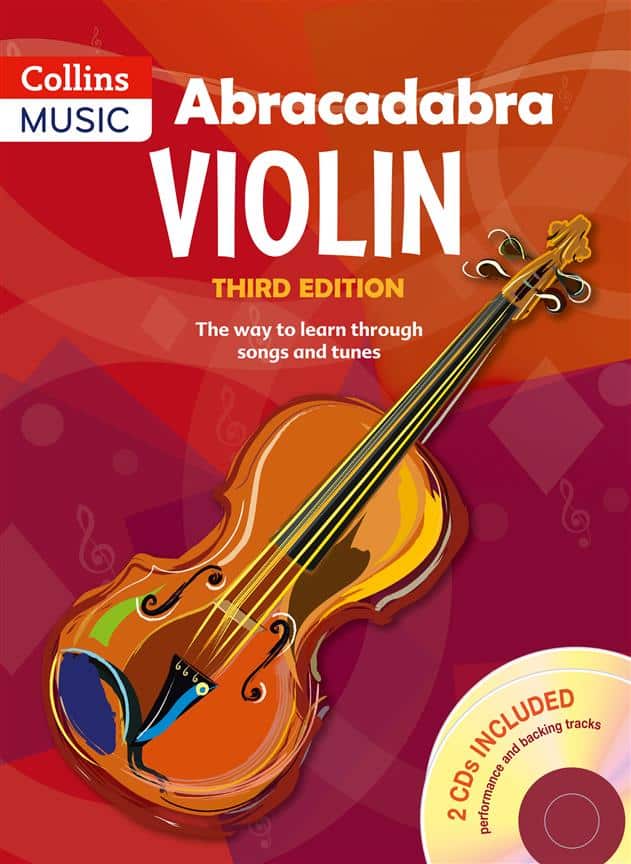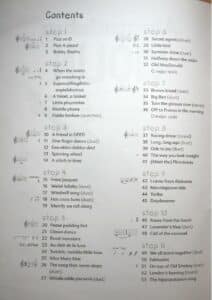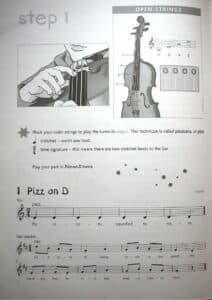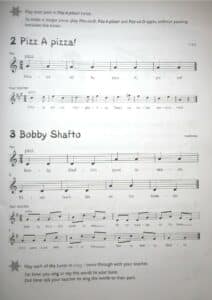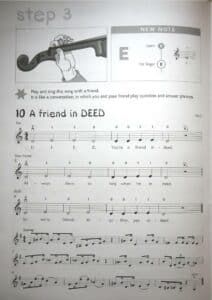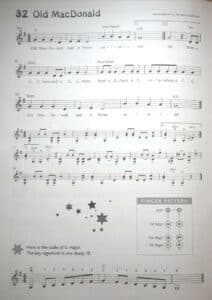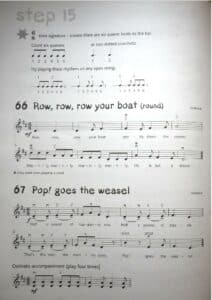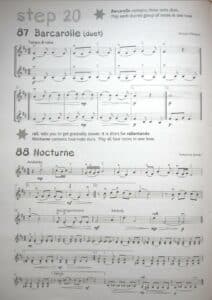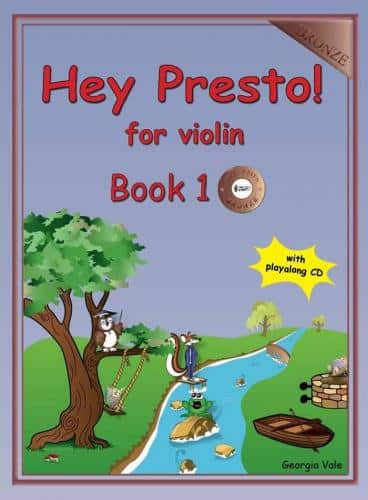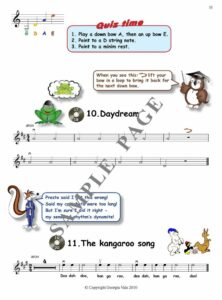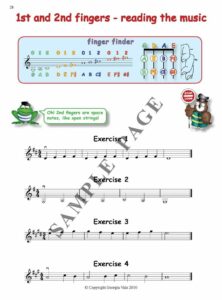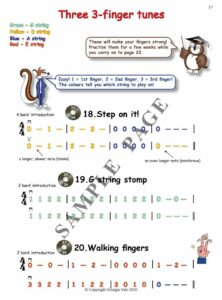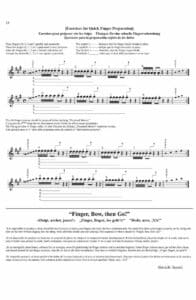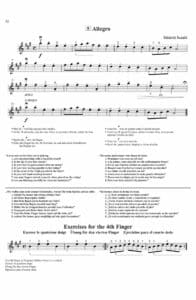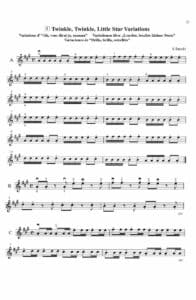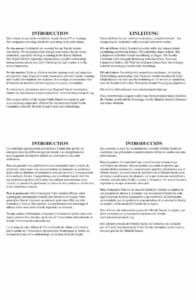5 Best Violin Books for Young Beginners (with sample pages)
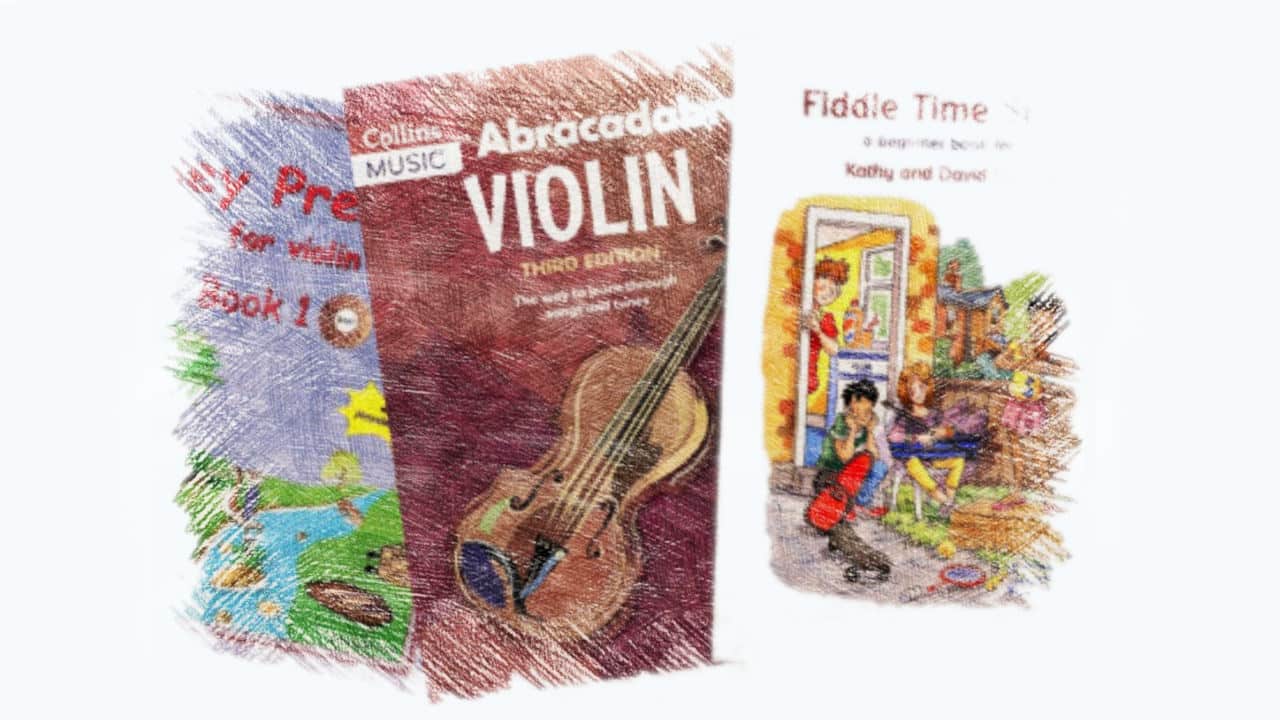
5 Best Violin Books for Young Beginners (with sample pages)
What the best violin books for beginners are, isn’t entirely an objective matter. It depends on the student’s learning style and personal preferences. But still, there are some books that have a proven track record of giving young violinists a great start to their musical journey.
We have years of experience watching how young beginners react to different educational material. In this article, we have hand-selected the best violin books for beginners. The factors we have taken into account are:
- Do they cover all crucial steps that ensure the student learns the right things in the right order and does not develop bad habits?
- Quality of the pieces. Are the pieces inspiring and fun to play?
- Charts and colours to motivate young students.
- Proven track record of student success. How much authority do these books have in the music tuition industry?
These points are not only important in terms of delivering a solid musical education. They are also important motivational factors for the students. All the books below score high on the points mentioned above.
Accompanied by a great violin teacher, these books will ensure that young beginner violinists get a great start to learning how to play the violin.
1. Fiddle Time Starters
Author: Kathy and David Blackwell
Student age: 5 – 9 years old
Fiddle Time is a really popular series of instructional books for violin. Fiddle Time Starters is the first one and is my personal favourite for absolute beginners. It focuses a lot on rhythm and bowing techniques which ensure that students develop a strong rhythmic sense from the very start.
It has an abundance of short open-string bowing pieces. This gives the student a lot of material to develop a strong right-hand technique before involving the left hand. It also has a CD with great sounding tracks that the students can play along with. This makes it a lot more fun for a lot of children and will help them stay motivated.
As a second book after having finished this one, I would highly recommend Fiddle Time Joggers or Abracadabra Violin. More about both of these below.
2. Fiddle Time Joggers
Author: Kathy and David Blackwell
Student age: 5 – 9 years old
This book gives you an abundance of easy early-stage pieces for the violin.
After having learnt the very basics of violin, young beginners need a lot of practise with the first position in order to solidify their technique. Fiddle Time Joggers is the perfect book for this purpose.
The difficulty progresses really slowly so that the student has enough material to develop a strong, solid technique.
When something progresses that slowly it needs to be interesting to keep the student motivated. Since the pieces are really easy to play, some people don’t find them that interesting when played unaccompanied. But this book is backed up by a great collection of audio material. And I think that’s what makes this one of the best violin books for beginners.
The book itself comes with a CD with high-quality recordings of all the pieces. When using this book, I would urge you to supply the student with an audio set-up that makes it as easy and effortless as possible to start and stop the audio tracks. If the student is practising themselves, they should also be able to operate the audio tracks themselves. If it’s easy to operate the audio tracks, and they hear how cool the pieces can sound, it will motivate them to practise.
The authors have also made backing tracks for all the songs in the pieces. They can be downloaded here for free:
So to sum up, this book is great for young violin beginners who:
- get easily motivated by interactive material, like nice soundtracks.
- have a short attention span.
- learns at a normal, slow pace where there is a need for a lot of slow-progressing material.
Parents and teachers should always keep a keen eye on the progression of the student. Everyone is different and has different needs. If someone gets easily bored with these pieces and it seems too easy for them, it’s probably time to move on to something more advanced, like Fiddle Time Runners or Abracadabra Violin Book 2.
3. Abracadabra Violin
Author: Peter Davey
Student age: 6 – 12 years old
Abracadabra Violin is very easy to fall in love with. It’s all about learning the violin through songs and tunes. Out of all the violin books for beginners that I’m aware of, this contains the most fun to play pieces. Many of the pieces in this book are well-known tunes from famous films such as Mary Poppins, The Wizard of Oz and The Sound of Music. These films are not as popular as they once were, so there might be tunes that young children haven’t heard yet. But they are still beautiful classics.
Abracadabra Violin Book 1 is a very all-encompassing book that goes from the very beginning all the way to late grade 1 level. Bear in mind that this book doesn’t have the slow progression of many right arm bowing exercises which is often necessary for young beginner violinists. It moves pretty quickly into using your left hand on the fingerboard. This is why I think it works best as a second book or as an additional book once the student has developed a strong bowing technique.
In most cases, young beginners need quite a lot of material for just the right hand before moving onto the left hand. If students use their left hand before they have a solid right arm foundation, they will shift all their focus to their left hand before they have developed enough muscle memory in the right bowing hand. They will then need to focus on too many technical aspects on both hands at the same time, which is difficult. But if the right arm has almost become automated, then they can more easily focus on just the left hand.
All the pictures and graphics are black and white. But as you can see in the pictures, the font and layout are child-friendly and not boring.
It comes with a CD with really beautifully recorded music to play along with.
4. Hey Presto! for Violin Book 1
Author: Georgia Vale
Student age: 5 – 9 years old
Often, original work and inventive creations spring up as a result of solving a problem. That’s the case with this book as well.
The author, Georgia Vale, made this series of educational books because she didn’t find any books that worked well for her and her students when she was teaching. She began creating her own violin books for beginners. After she started to use Hey Presto with her students, she immediately got really good reactions from them, and they became more engaged.
Something I really like about this book is that it includes prompts for how long you should practise the exercises for, and sometimes why you should practise them. This gives the students an understanding of why it’s a good idea to play exercises alongside tunes and melodies.
Since the explanations are written in their language, it gives young players the confidence to attempt to understand music theory on their own accord between lessons. It’s also easy for parents without a musical background to understand the music. This makes it possible to help their child if they’re struggling with something. And this is partly the reason why the author made this book. The charts are colourful and visual. All of this together will give young violinists a strong and fun start on their violin journey.
5. Suzuki Violin School, Volume 1
Author: Shinichi Suzuki
Student age: 3 – 10 years old (See below for more details)
You have probably heard of the Suzuki method. Although you might have heard good things about it, it’s important that you understand what it entails before taking your child through it.
The Suzuki method was founded in the mid-20th century by Shinichi Suzuki, a Japanese violinist and music educator. This method incorporates Suzuki’s ideas about music education.
Here are the key points you need to understand about the Suzuki method:
- Listening and understanding music aurally is more important than reading music. Listening to music every day is required for students who follow this method.
- Good posture and technique are more important than being able to read music.
- Parents are heavily involved in the learning process. They are often expected to observe the lesson, take notes and help with correcting finger positions etc.
- A child learning an instrument is done the same way as they learn their native language. They learn how to speak (play their instrument) before learning how to read (sight-read).
Please be aware that the student age for this book can vary a lot. Shinichi Suzuki himself thinks it’s commonplace to start with this method as early as 3 or 4 years old. He argues that music can be learnt the same way as you learn your native language. That’s why you can start at that age.
If you want to take your child through the Suzuki method from a very early age, you need to find a teacher who is experienced in teaching this particular method.
However, even though you’re not learning to play the violin with the Suzuki method, you can still use the Suzuki books as they are great for developing a strong technique. In that case, even this first book is too advanced to start with, but perfect after the student has started to use their left hand.
The end goal with the Suzuki method is not only to become a great musician but to become a good-hearted and moral person who embraces challenges.
If you’re interested in the Suzuki method, read more about it here. It’s a great article that explains the whole process in a bit more detail.
Violin Books for Beginners – Conclusion
If you still feel indecisive about which violin book to buy, here is a suggestion for absolute beginners: Start with Fiddle time starters or Hey Presto, whichever you like the look of the most. Then a few months down the line, get Abracadabra (as soon as the student starts using their left hand). If they get really into the violin and don’t mind practising, consider getting the Suzuki book shortly after to develop a great technique. You don’t necessarily have to go through the whole Suzuki method in order to take some advantage of it.Looking for a violin teacher in London?
We can help with that.
We specialise in matching students with music teachers. Click here to browse through all our violin teachers in London:
If you can’t find what you’re looking for on our website, you can also request a tutor by clicking the button below. Just describe what you’re looking for in your music tutor, then we will try our best to find someone like that in your area. We know a lot more tutors than we have listed on our site, so we can help you find what you’re looking for. We won’t charge you anything for this matching service.


